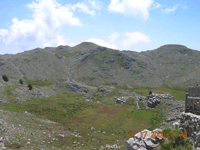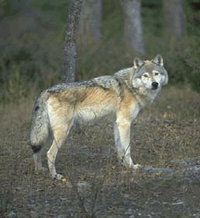 The SCI and SPA are an example of mountainous-hilly sites, due to the altitudinal range in which they are located: between 500 m above sea level and 1742 m above sea level (SCI) and between 204 m and 1742 m above sea level (SPA). A small area of the river Calore falls within the site, with the typical river environment, characterized by a bed of pebbles and natural banks, covered with riparian vegetation. The SCI and SPA are an example of mountainous-hilly sites, due to the altitudinal range in which they are located: between 500 m above sea level and 1742 m above sea level (SCI) and between 204 m and 1742 m above sea level (SPA). A small area of the river Calore falls within the site, with the typical river environment, characterized by a bed of pebbles and natural banks, covered with riparian vegetation.
|
|
There are many habitats of the Annex I of the Directive 92/43. In the lower areas, there is the presence of arable land and orchards, comprising mainly grasslands and olive groves; moving away from the cultivated areas we can find grassland habitats on limestone substrates with flowering bushes with numerous orchids; moving towards higher altitudes, there are mixed forests with a strong component of chestnut, Castanea sativa, advancing in the direction of the peaks there are some highlands characterized by annual calcareous grasslands of the Mediterranean type, at greater heights grow lush Apennine beech forests with Taxus and Ilex, which usually border limestone walls or rocks characterized by chasmophytic vegetation.  Among the animal species of particular interest is the cave fauna that resides in about 400 caves and even more important in a number of lower cavities; groups typical of this environment are the bats and arthropods, as well as carnivorous mammals such as wolves and wild cats. The ornithofauna is very rich and is characterized by numerous species of nesting and migratory birds of prey, both in open environments (Nightjar, Caprimulgus europaeus, Woodlark, Lullula arborea) and in forest environments (collared flycatcher, Ficedula albicollis, black woodpecker, Dryocopus martius). There are also many amphibians and some rare species of invertebrates such as Coenagrion mercurial, melanargia arge, Cerambyx cerdo, and Vertigo moulinsiana. Among the animal species of particular interest is the cave fauna that resides in about 400 caves and even more important in a number of lower cavities; groups typical of this environment are the bats and arthropods, as well as carnivorous mammals such as wolves and wild cats. The ornithofauna is very rich and is characterized by numerous species of nesting and migratory birds of prey, both in open environments (Nightjar, Caprimulgus europaeus, Woodlark, Lullula arborea) and in forest environments (collared flycatcher, Ficedula albicollis, black woodpecker, Dryocopus martius). There are also many amphibians and some rare species of invertebrates such as Coenagrion mercurial, melanargia arge, Cerambyx cerdo, and Vertigo moulinsiana.
|
|
The site, on the whole, is in a good state of conservation, particularly for the areas at greater heights; beech forests, plateaus and ridges do not seem to have suffered particular damage over the years. |
